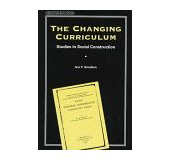The Changing Curriculum: studies in social construction
Chariots of Fire
As well as not being arranged in classes, the curriculum was often individualised rather than sequential. Harrison describes 'Old Betty W's School' where; on fine days the little forms were taken outside her cottage and placed under the window. The children had their books, or their knitting and the old lady, knitting herself incessantly, marched backwards and forwards hearing lessons and watching work’ (Harrison 1984, p. 290).
These working class schools were effectively driven out by the version of state schooling which followed the 1870 act. Thompson has argued that the watershed for such schools, certainly such styles of working class education, were the fears engendered by the French Revolution. From now on the State played an increasing role in the organisation of schooling and of curriculum:
attitudes towards social class, popular culture and education became 'set' in the aftermath of the French Revolution. For a century and more most middle class educationalists could not distinguish the work of education from that of social control: and this entailed too often, a repression or a denial of the life experience of their pupils as expressed in uncouth dialect or in traditional cultural forms. Hence education and received experience were at odds with each other. And those working men who by their own efforts broke into the educated culture found themselves at once in the same place of tension, in which education brought with it the danger of rejection of their fellows and self-distrust. The tension of course continues (Thompson 1968, p. 16).
The disjuncture then between common cultural experience and curriculum can be estimated, for working class clienteles, as developing after the moral panics associated with the French Revolution. From this date on the school curriculum was often overlaid by social control concerns for the ordinary working populace.
For other classes at the time this overlay of closely structured, sequenced and presented curriculum was not always deemed necessary. We learn that the public schools 'followed no common pattern of education, though they agreed on the taking of Latin and Greek as the main component of the curriculum. Each evolved its own unique forms of organisation with idiosyncratic vocabularies to describe them' (Reid 1985). In so far as the curriculum depended on a learning of texts it was not judged essential that the teacher taught the text - a highly individualised form of curriculum. Moreover 'where students were divided into 'forms' (a term referring originally to the benches on which they sat) this was done in a rough and ready manner for the convenience of teaching and not with the idea of establishing a hierarchy of ability or a sequence of learning' (Reid 1985, p. 296).
